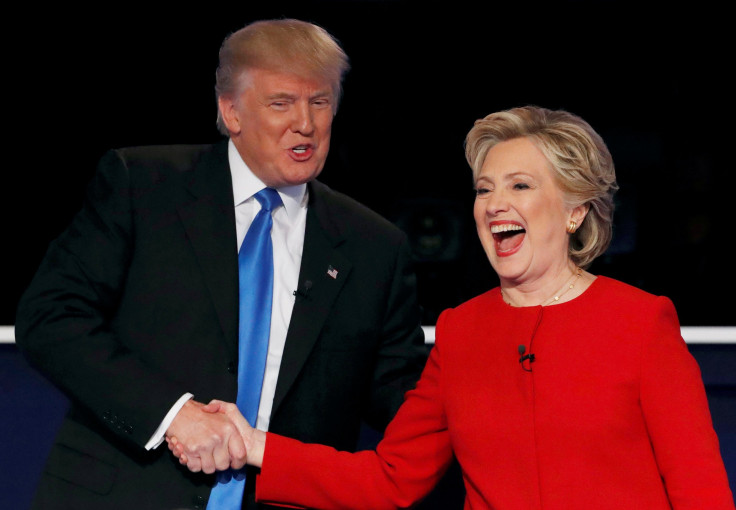Hillary Clinton's Attack Ads Lacked Policy In Presidential Campaign, Says Study

President Donald Trump ran an unconventional campaign against Hillary Clinton in last year's presidential race, but a new analysis of campaign ads from last year's campaign shows that Clinton also broke established campaign norms, and doing so might have lost her the presidency.
A study conducted by the Wesleyan Media Project shows that Clinton's campaign ads were radically different than ads run by any Democratic or Republican presidential nominee this century — and much more personal. Just a quarter of the Clinton campaign's ads run between June 8 and Election Day focused on policy, while more than 60 percent of her ads focused on candidate characteristics, the analysis showed. In contrast, more than 70 percent of Trump's ads were policy-focused, with just 10 percent of the GOP nominee's ads focusing on characteristics of the candidates.
Trump's unusual campaign aside, his TV ads talked policy far more than Clinton's. @efranklinfowler, Ridout & Franzhttps://t.co/p7zgUhI2SM pic.twitter.com/6YMYAu2PWv
— Elections Research Center (@ElectionsCenter) February 28, 2017
The Clinton campaign's focus on characteristics was most certainly a product of her unusual opponent, who had historically high unfavorability ratings. But by spending most of its airtime contrasting the personal characteristics of the candidates, Clinton's campaign ads advocated policy less than any recent Democratic or Republican presidential nominee. Since 2000, every nominee except John McCain in 2008 used 60 percent of their ads to discuss policy. McCain used 40 percent of his ads to discuss policy, but almost 50 percent of his ads discussed both policy and personal characteristics. No other candidate in the analysis besides Clinton used more than 10 percent of their ads to solely discuss personal characteristics.
The study's authors wrote in the February issue of The Forum that because Clinton spent "vastly more" on advertising than Donald Trump, it might appear that advertising "no longer matters in elections, an inference made believable in a 'post-truth' media environment where a tweet can dominate a news cycle."
But that view misses what a departure Clinton's ad strategy was from presidential campaign orthodoxy.
"We urge caution, however, in drawing that conclusion too quickly," the authors wrote. "Clinton’s unexpected losses came in states in which she failed to air ads until the last week and... Clinton’s message was devoid of discussions of policy in a way not seen in the previous four presidential contests."
© Copyright IBTimes 2025. All rights reserved.






















